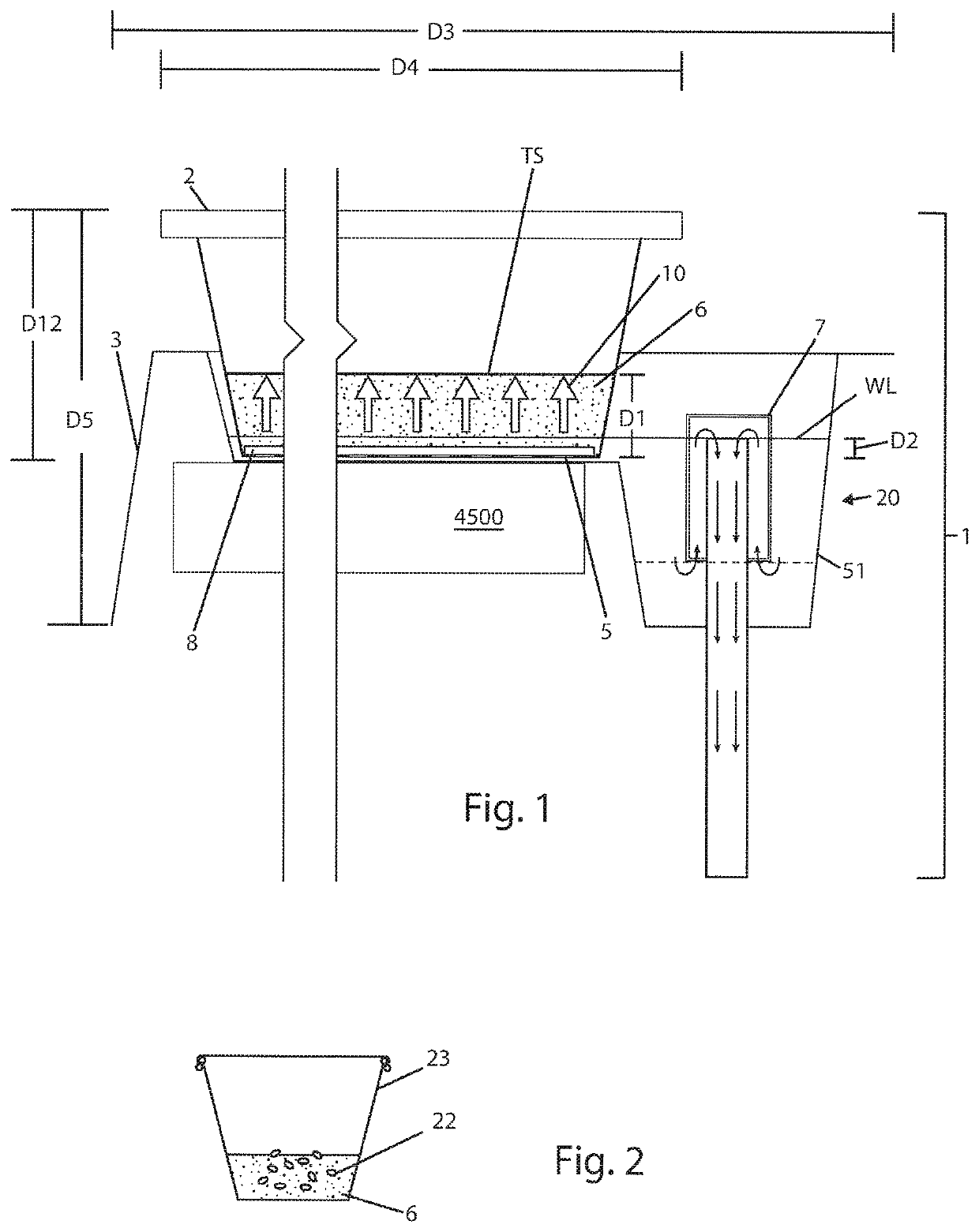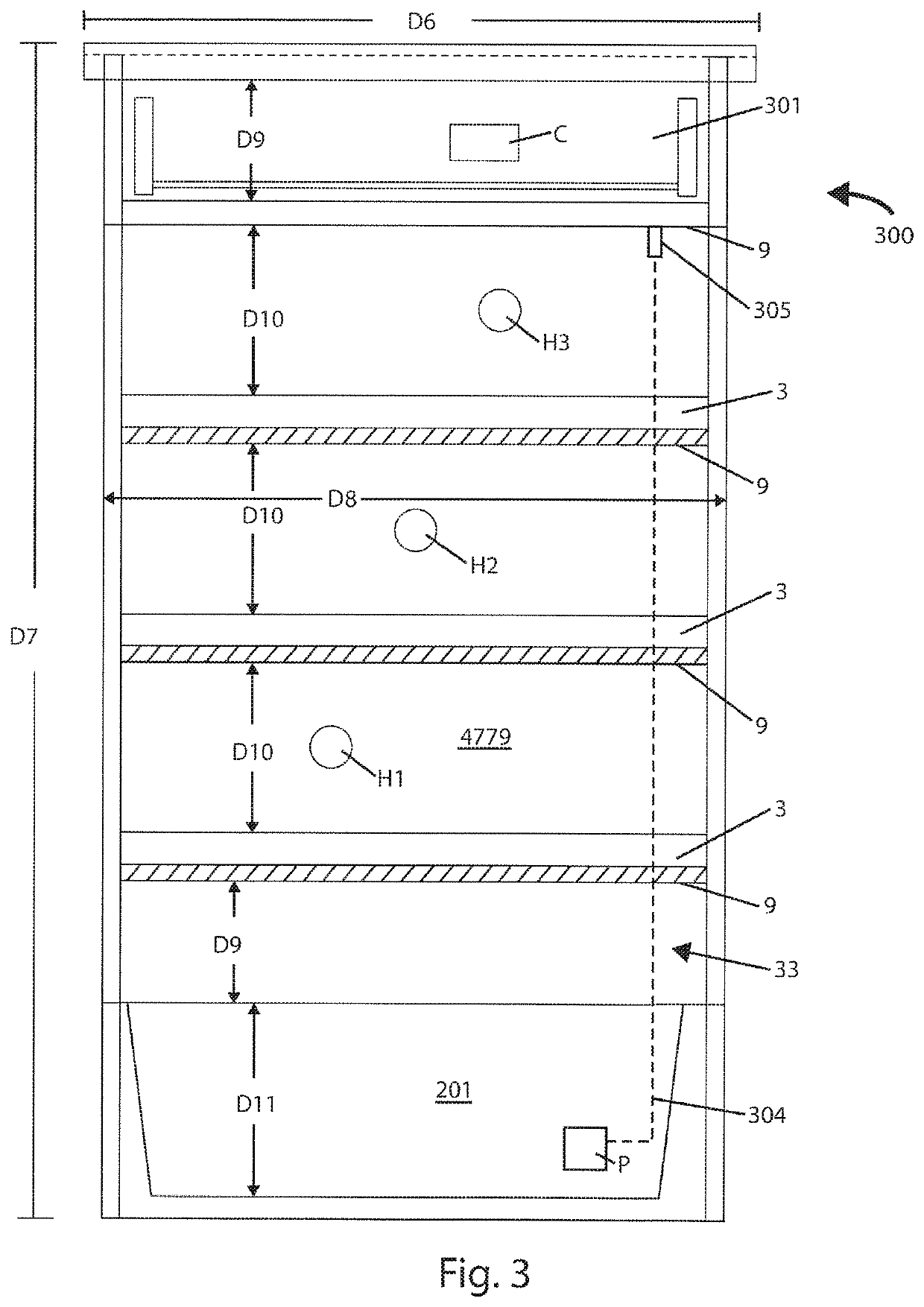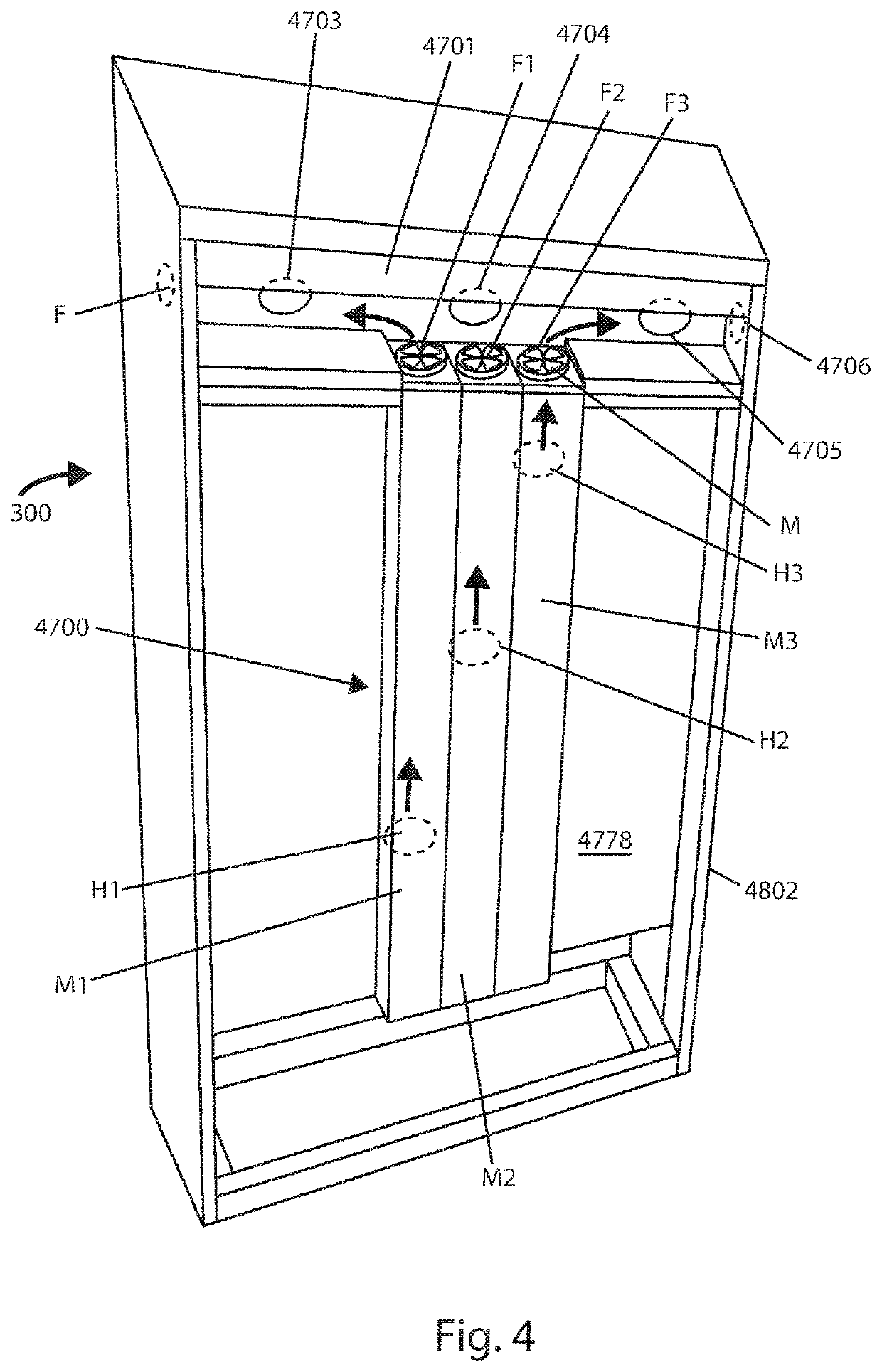Organic Soil Based Automated Growing Enclosure
an automated growing and organic soil technology, applied in the field of inhouse method and maintenance free enclosures, can solve the problems of no soil, no soil, and yet more difficult to master aquaponics for cultivators, and achieve the effect of preventing bacteria growth and effective plant growth
- Summary
- Abstract
- Description
- Claims
- Application Information
AI Technical Summary
Benefits of technology
Problems solved by technology
Method used
Image
Examples
Embodiment Construction
[0061]Referring first to FIG. 1 a grow subsystem 1 can be replicated in a stack of two or more layers as shown in FIG. 3, grow enclosure 300. Each subsystem 1 comprises a hydration tray 3 with an outlet 20 having a Bell Siphon 7. Each hydration tray 3 can be wide enough, such as three grow containers 2. Nominal dimensions are D1=20 mm (soil depth), D2=10 mm (maximum water depth adjusted by height of Bell Siphon 7), D3=1′ 1⅜″, D4=10″, D5=3¾″. Each hydration tray 3 has an overhead LED light 4500.
[0062]The soil is preferably enriched potting soil with microbes and a coconut choir to enhance wicking. A watering cycle such as once a day is selected. Each hydration tray receives enough water to trigger the Bell Siphon 7, and the water is returned to the reservoir 201 shown in FIG. 3.
[0063]The water rises to about half the soil 6 depth. Then the water is wicked up to the top of the soil labeled TS. Each grow container is preferably made of plastic with about sixteen holes 5 on its bottom 4...
PUM
| Property | Measurement | Unit |
|---|---|---|
| size | aaaaa | aaaaa |
| water depth | aaaaa | aaaaa |
| depth | aaaaa | aaaaa |
Abstract
Description
Claims
Application Information
 Login to View More
Login to View More - R&D
- Intellectual Property
- Life Sciences
- Materials
- Tech Scout
- Unparalleled Data Quality
- Higher Quality Content
- 60% Fewer Hallucinations
Browse by: Latest US Patents, China's latest patents, Technical Efficacy Thesaurus, Application Domain, Technology Topic, Popular Technical Reports.
© 2025 PatSnap. All rights reserved.Legal|Privacy policy|Modern Slavery Act Transparency Statement|Sitemap|About US| Contact US: help@patsnap.com



